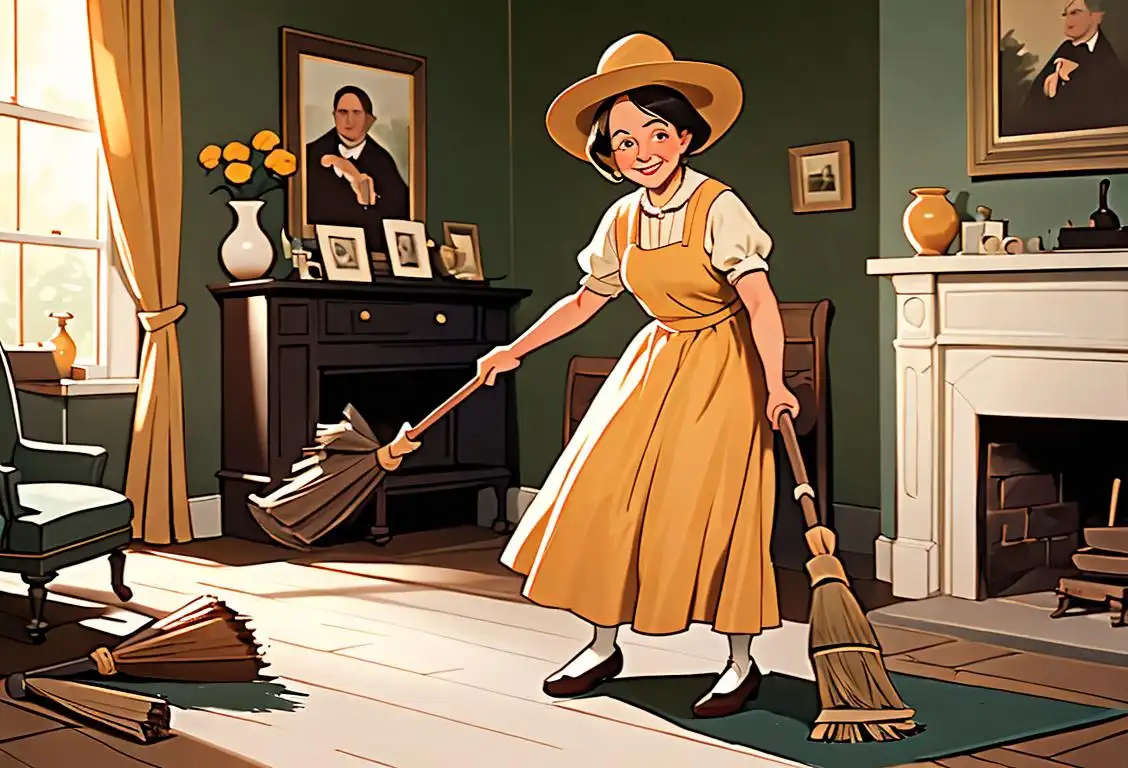National Broom Day

Have you ever wished you could celebrate a day dedicated to brooms? Well, your wish has been granted because National Broom Day is here to sweep you off your feet! Get ready to clean up some fun and learn all about the fascinating history behind this household essential.
When is Broom Day?
It's national broom day on the 11th February.
The Origins of National Broom Day
It's time to dive into the magical world of brooms, which have been sweeping through history for centuries. Brooms have been used by humans for thousands of years to keep their living spaces tidy and free from dirt and debris. The exact origin of the broom is somewhat shrouded in mystery, but we do know that early brooms were made from natural materials like twigs, straw, and even animal hair.
The invention of the modern broom is attributed to the Shakers, a religious group known for their craftsmanship and simplicity. With their innovative designs and sturdy construction, Shaker brooms quickly gained popularity and became a household staple. Today, brooms have evolved into various shapes and sizes to suit different cleaning needs, whether you're sweeping a small kitchen or a grand ballroom.
How to Celebrate National Broom Day
National Broom Day is a perfect opportunity to pay homage to this unsung hero of cleanliness. Here are a few ways you can show your appreciation:
- Give your broom a name: Let's face it, your broom is practically a member of the family. Give it a clever or quirky name, and maybe even dress it up with a little bow tie or hat. Just don't forget to introduce it to your loved ones!
- Master the art of broom twirling: Channel your inner Mary Poppins and spend some time mastering the art of broom twirling. Who knows, you might even discover a hidden talent for broom-based acrobatics.
- Organize a broom-themed sports event: Gather your friends and organize a broomstick obstacle course or a broom hockey game. It's a fun way to get active while honoring our trusty cleaning companion.
Did You Know?
Did you know that the world's largest broom, measuring a whopping 40 feet tall, was created in the small town of Arcola, Illinois? This giant broom is a true testament to the power and versatility of this humble cleaning tool. With such a massive broom, you could probably clean an entire city in record time!
History behind the term 'Broom'
13th Century
Ancient Origins
The term 'broom' can be traced back to the 13th century, originating from the Old English word 'brom' which referred to a type of shrub. This shrub, known as 'genista' or 'broom' in Latin, was commonly used for making sweeping tools due to its sturdy and flexible branches.
15th Century
Birch Brooms
During the 15th century, broom making evolved as people started using bundles of birch twigs tied together for sweeping. These brooms, called 'birch brooms,' were lightweight and effective in cleaning outdoor spaces. The name 'broom' continued to be associated with sweeping tools made from different materials.
16th Century
Broomcorn Brooms
In the 16th century, a new material called 'broomcorn' gained popularity for making brooms. Broomcorn refers to a type of sorghum grass with long, straight stalks that resemble cornstalks. Broomcorn brooms, often bound with wire or twine, became widely used due to their durability and superior sweeping capabilities.
18th Century
Industrial Revolution and Mass Production
With the advent of the Industrial Revolution in the 18th century, broom making transitioned from a craft to a mass-produced commodity. The introduction of specialized broom-making machinery enabled faster production and reduced costs, making brooms more accessible to the general public.
19th Century
Broomstick Symbolism
During the 19th century, the term 'broomstick' gained symbolic associations, especially during the period of witch trials and folklore. Broomsticks became iconic symbols of witches as they were often depicted as a means of transportation for witches in popular culture.
20th Century
Modern Innovation
Advancements in technology during the 20th century led to the development of various broom designs and materials. Synthetic bristles made from nylon or polyester began to replace natural materials, offering improved durability and sweeping efficiency. Modern brooms also feature ergonomic handles and innovative designs, catering to different cleaning needs.
Did you know?
Did you know that the world's largest broom, measuring a whopping 40 feet tall, was created in the small town of Arcola, Illinois?Tagged
fun loved ones sportsFirst identified
9th June 2017Most mentioned on
11th February 2020Total mentions
73Other days
Suicide Prevention Month Day
Happiness Day
Drink A Beer Day
Trivia Day
Cancer Survivors Day
Take A Hike Day
Memorial Day
Foundation Day
Bobblehead Day
Bowling Day









